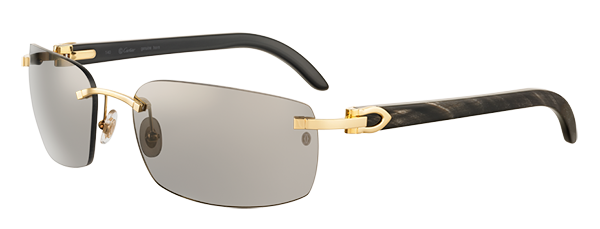A history of royal patronage and some of the world’s most iconic jewellery pieces, Cartier’s journey through the years has undoubtedly been that of impeccable quality and unmatchable style
A slithering snake coils around your finger in one smooth movement. A pair of menacing crocodiles finds home around your delicate neck. A royal tiger dangles from each of your ears, ready to pounce at the slightest provocation. The ravishing rubies, dazzling diamonds and enchanting emeralds belie a supposed fantasy. In all probability, you are beholding a jewellery piece by the legendary House of Cartier.
From the colours of India to the detailed Chinese designs, from the boldness of Russian czars to the tomb of Tutankhamen – the influencing factors for Cartier have been far and wide, contributing to the House’s ever-evolving and unique objets d’ art.
From a humble beginning in Paris to becoming one of the most sought after luxury brands in the world, Cartier’s journey has been a wonderfully crafted odyssey.
The Stepping Stone
Louis-François Cartier established the House of Cartier in 1847 at 29 Rue Montorgueil, Paris, after taking over his master Adolphe Picard’s workshop. He expanded the premises, and built his reputation on knowing how to satisfy the most extravagant of desires.
Cartier’s jewellery designs were characterised by a light, airy touch as opposed to the ornate fashions of the erstwhile era and quickly made a mark on the Parisian society. His exemplary workmanship earned him the patronage of Princess Mathilde, Napoleon III’s cousin, and opened the doors of the aristocracy.

In 1874, Alfred Cartier took over the company from his father Louis-François. Alfred’s three sons – Louis, Pierre and Jacques – would eventually turn the family business into a global empire.
The Royal Affair
Among the oldest jewellers in the world, the House of Cartier has built a reputation for selling only the finest quality jewellery and accessories. The Love Bracelet, Garland Tiara, Trinity Ring, Tutti Frutti Necklace, and others will always remain among the most iconic jewellery pieces in the world.
Driven by the economic prosperity between the wars, Cartier continued to create and fulfil the demand for original and exceptional jewels; most made-to-order. In addition to attracting the world’s most eminent private clients, the royal courts of Russia, Spain, Portugal, England, Siam and Greece officially granted Cartier their patronage.
Shining Bright
Under the leadership of the three brothers, Cartier’s influence came to be felt on the jewellery industry worldwide.

The House eventually lent its panache to diverse product lines such as leather goods, writing instruments, home decor items, lighters, scarves, etc. And most famously, watches.
In 1904, Louis Cartier designed a wristwatch for his friend, Brazilian aviator Alberto Santos-Dumont who did not prefer using a pocket watch during flights. Thus was born the Santos – the first wristwatch made for men.
Many of Cartier’s wristwatch designs such as Tank, Torque, and others are the most recognisable designs in the world.
The Panther Arrives
Designs with flora and fauna motifs became Cartier’s distinctive style. As the House’s signature animal, the panther has always reigned supreme. It sprung to life with the arrival of the Director of Fine Jewellery Jeanne Toussaint, nicknamed ‘La Panthère’.
Cartier was the first jeweller to explore femininity through the metaphor of the panther. First introduced in 1914 as simple onyx spots, in just 3 years the panther grew into a complete animal – powerful and graceful, adorning powder boxes, vanity cases, necklaces, earrings and the likes.

Post Family Ownership
By 1968, Cartier had evolved into a mammoth multinational organisation. After the death of the three brothers, their successors sold the Cartier branches at Paris, London and New York. In 1972, Joseph Kanoui led a group of investors to buy Cartier Paris. In 1974 and 1976, the group repurchased the London and New York branches respectively to re-establish Cartier’s image of prestige.
The brand is now a wholly-owned subsidiary of Compagnie Financière Richemont SA. It operates nearly 200 retail stores in more than 125 countries.
Cartier Eyewear: Dazzle Thy Eyes
The brand has expanded into eyewear which is inspired by the same characteristic exquisiteness of the French luxury brand. The superior quality finish and unparalleled craftsmanship make the eyewear a must-have for the rich and famous. In the last 30 years, Cartier eyewear collections have come to be regarded as masterpieces – with styles that suit every occasion and cater to every taste.
The rimless C Décor sunglasses, made from wood, horn and composite, are for those who like to keep it simple yet stylish. The contemporary Santos de Cartier collection is designed using the famous screws from the Santos watch. The light feminine Panthère de Cartier designs are adorned with the iconic panther and have a wide collection of coloured lenses with temples in golden or platinum finishes. Trinity de Cartier offers distinguished feminine eyewear with superior craftsmanship and draws inspiration from the three interlocked rings of Cartier Trinity. The limited edition Must de Cartier pieces capture the classic essence of the House with elegant lines and high quality materials. The boldest of the lot, models in the Première Cartier Collection sport modern lines, adorned with three metal rivets and platinum, golden and ruthenium finishes.

True to the inherent design sense, the eyewear is a reflection of Cartier’s creativity and history. The eyewear is made from precious metals, stunning gems as also exceptional materials such as Buffalo horn, Bubinga wood, leather and carbon. From Jennifer Garner, Kanye West, Jean Claude Van Damme, Christopher Walken, Tom Cruise and Lady Gaga to Russian President Vladimir Putin, Cartier eyewear is endorsed by many celebrities. Just as the famed jewellery, each piece of Cartier eyewear is a manifestation of luxury itself.
Cartier has been continuously remodeling and reinventing its designs without losing its fundamental design identity. With everything going for the brand, it looks set to be the brightest gem in the luxury industry.
TIMELINE
1847: Foundation of the House of Cartier by Louis-François Cartier.
1874: Alfred Cartier becomes head of the company.
1898: Paris branch shifts to 13 Rue de La Paix, where it stands till today.
1902: Pierre Cartier opens the London store on 4 New Burlington Street.
1904: Louis Cartier designs the Santos – the first wristwatch for Alberto Santos-Dumont.
1914: Introduction of the iconic Cartier panther.
1917: Opening of the Cartier New York store by Jacques Cartier.
1924: Creation of the three-band ring and bracelet combining gold in three colours, known as Trinity.
1942: Death of Louis and Jacques Cartier.
1964: Death of Pierre Cartier, ending Cartier management of the family business.
1972: Cartier Paris bought by a group of investors led by Joseph Kanoui.
1974-76: Investors of Cartier Monde buyback Cartier London and Cartier New York.
2000: Creation of a jewellery collection for the 21st century.
2004: Cartier celebrates 100 years of the Santos Watch by creating the Cartier Santos 100.
2012: Cartier announces the international release of ‘L’Odyssee de Cartier’, a three-and-one-half minute film showing Cartier’s 165 year history.












